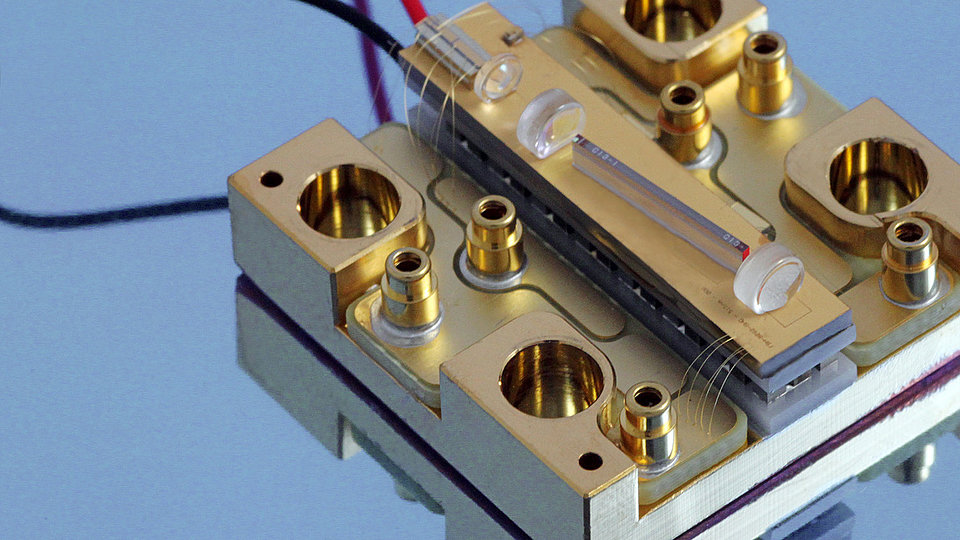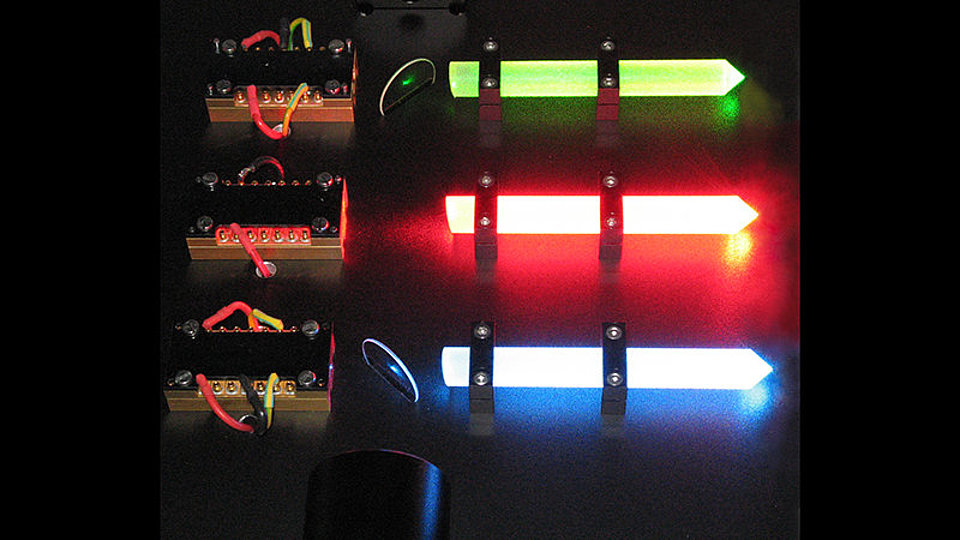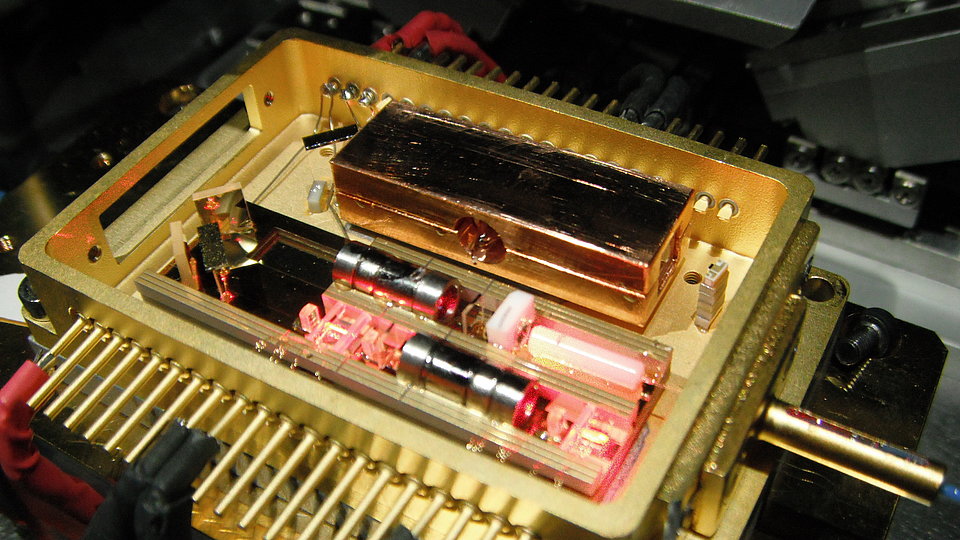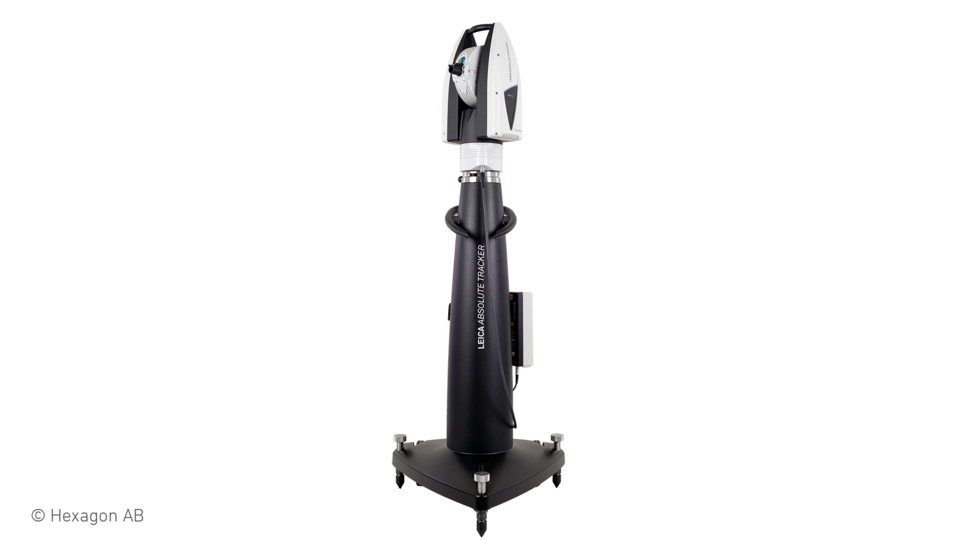Lasers for Life Sciences, Measurements & Displays
We develop diode laser technology for medical and life science applications, which we use to tailor our light sources to the application - for example, for photodynamic therapy and dentistry. We also use our laser technology for optical distance measurement based on the interferometry principle. Moreover, we develop laser diodes for metrology, which are used, for example, in the monitoring of current collectors of electric vehicles. Other applications include 3D image reproduction using holography for next-generation displays.
The requirements for such applications are met by our compact, frequency-stabilized diode lasers, which can replace largesized lasers. FBH's miniaturized laser sources also score with efficiency, precise adjustment of the required wavelength, tunability, high coherence and many other advantages. Thanks to their compact dimensions, the corresponding systems are significantly smaller, more flexible and can also be used in portable applications.




